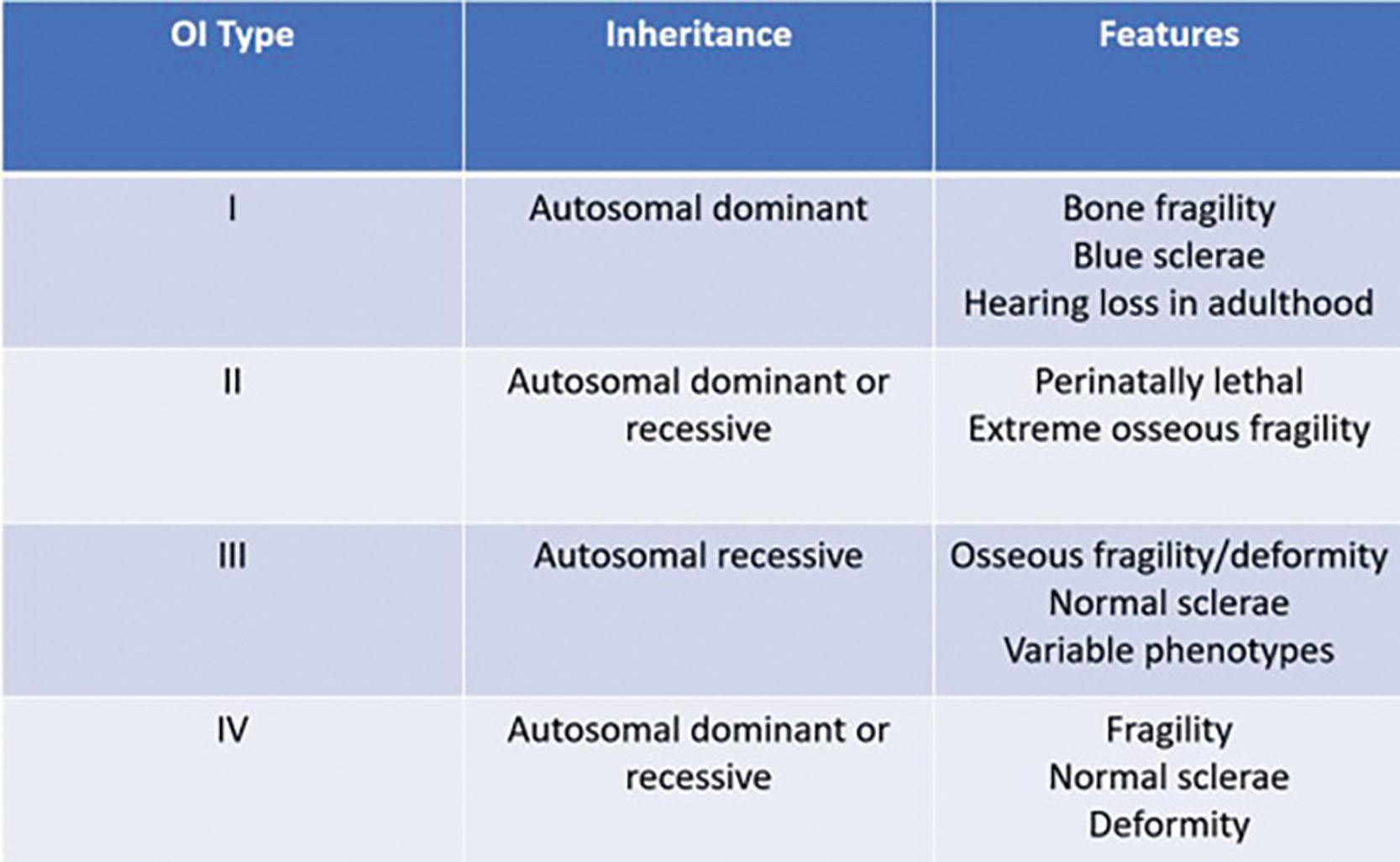Physical Address
304 North Cardinal St.
Dorchester Center, MA 02124
Osteogenesis imperfecta (OI) presents unique challenges for the orthopedic surgeon. This hereditary defect in type I collagen can vary in its manifestations from mild to severe. Depending on the type and severity of OI, treatment may range from medical management and routine fracture care to deformity correction with complex realigning osteotomies. Management can be fraught with complications without careful preoperative planning and intraoperative attention to detail.
OI is a group of genetic disorders involving mutations in type I collagen production that make patients susceptible to bone fragility and frequent fracture. Over 286 mutations have been described, with the basic anomaly involving mutations of COL1A1 and COL1A2 . Type I collagen is the most important structural protein of the bone, skin, tendons, dentin, and sclera. This leads to multiple skeletal and extraskeletal manifestations, including frequent fractures, deformity, hearing loss, dental caries, blue sclera, and cardiac valve abnormalities. The most recognized classification system of OI is the Sillence Classification ( Fig. 38.1 ), which is stratified into mild, moderate to severe, severe, and lethal categories. Recently this has been expanded to seven types overall.

For the most mild cases, OI will commonly present in toddlers as lower extremity fractures. These require routine fracture management with early mobilization to prevent the cycle associated with prolonged immobilization including decline in bone density, deconditioning, and increased fracture risk. Fractures will generally heal; however, the same abnormal bone quality will persist. Over time this contributes to the impaired function, deformity, and bowing traditionally seen with OI that ultimately may require surgical correction through osteotomies. The primary goal of surgical intervention in these patients is to decrease fracture risk and restore the anatomic axis of their long bones.
The rate of complications in the treatment of OI can be high. Successful operative treatment starts prior to surgery with appropriate radiographs, discontinuation of some medical therapies, preoperative planning, and implant selection and continues through the intraoperative and postoperative periods.
Become a Clinical Tree membership for Full access and enjoy Unlimited articles
If you are a member. Log in here